
The Bottom Line
Introduction, Specifications, and Pricing
In 2018 we saw the launch of a few mainstream chipsets, mainly the B360, H370, Q370, and Z390 chipsets. These chipsets offered a few newer features, but at the low-end of the spectrum, mainly B360, there was a lot that wasn't there.
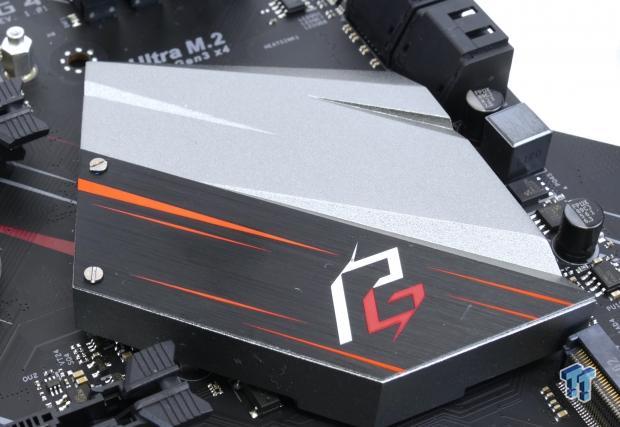
So Intel went back and grabbed their previous generation chipset and adapted it for the 300 series, and called it B365. The B365 chipset does not have the integrated USB 3.1 (10Gb/s) or integrated WIFI MAC, but instead has eight more PCI-E 3.0 lanes, two more USB 3.0, and supports one more PCI-E M.2 slot compared to the B360 chipset.
While you can add USB 3.1 and WIFI, you can't add in eight extra PCI-E 3.0 lanes into the chipset, and so there is demand for more equipped B-series motherboards, and so we have our first B365 motherboard. Let's take a look!
Specifications

The B365 Phantom Gaming 4 features two M.2 slots, USB 3.0, SATA6Gb/s, and RGB LED support.
Pricing
The price of the B365 Phantom Gaming 4 is right above the $100 mark.
Packaging and B365 Phantom Gaming 4 Overview
Packaging and Overview
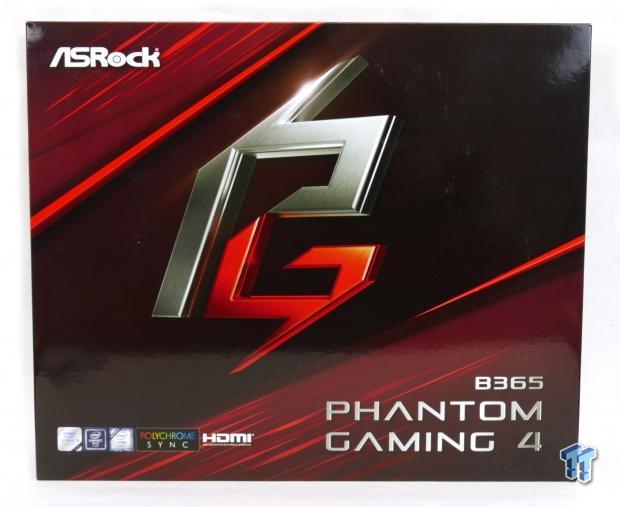
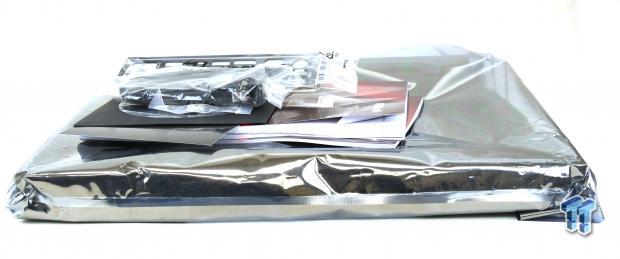
The box is stylized like the motherboard, and the packaging is high quality.
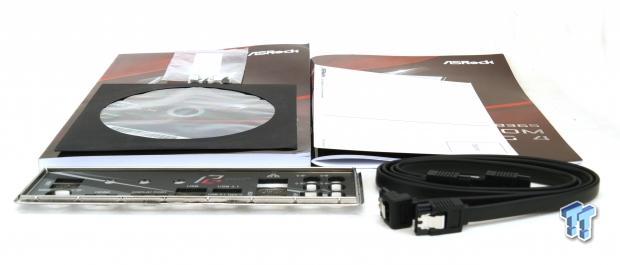
The accessory package includes IO shield, two SATA6Gb/s cables, postcard, driver DVD, and manual.
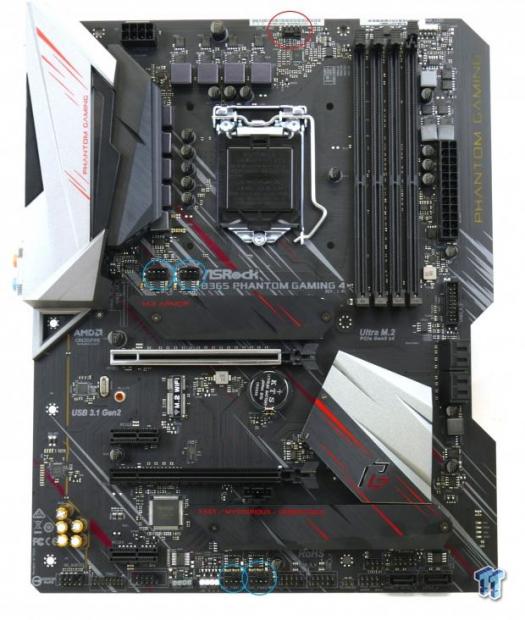
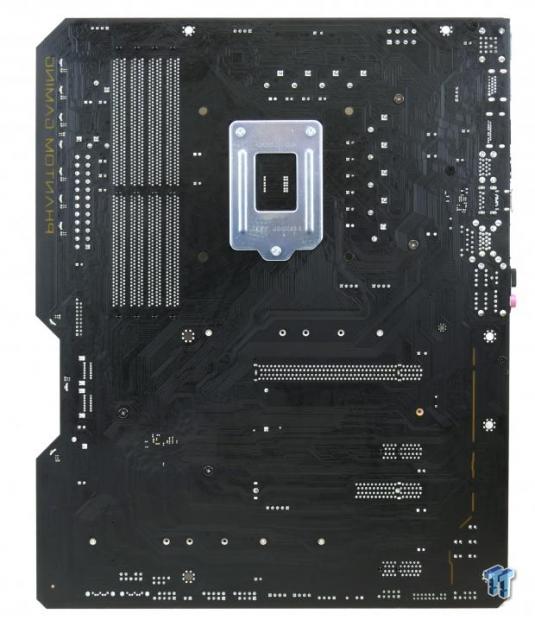
There are a total of five fan headers on the motherboard. ASRock has a CPU fan header circled in red, it offers up to 1A of power and is PWM mode. The other four headers are rated for 2A each, and will auto-detect if a DC or PWM fan is installed, but you can change the mode manually if you want. The motherboard has a sleek silver/black/red color theme and merges the PCB with the heat sinks. The back of the motherboard is clean.

The rear IO panel features four USB 2.0 ports, four USB 3.0 ports, PS/2 keyboard/mouse port, DisplayPort, HDMI, USB 3.1 type-A, USB 3.1 type-C, 1Gbit LAN, and gold plated 7.1 audio outputs.
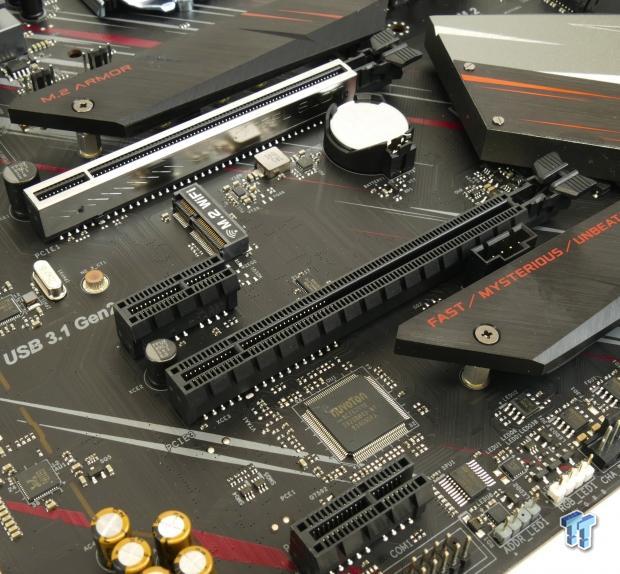
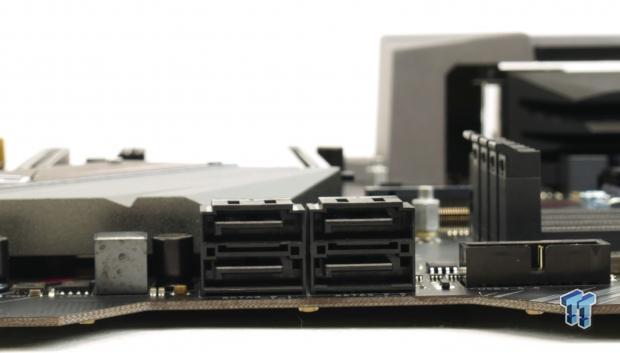
The PCI-E layout is simple to understand. The topmost PCI-E x16 slot is wired directly to the CPU and is always x16. The second PCI-E x16 physical (x4 electrical) will downgrade to x2 if either of the x1 slots is occupied. There are four right angled SATA 6Gbps ports.
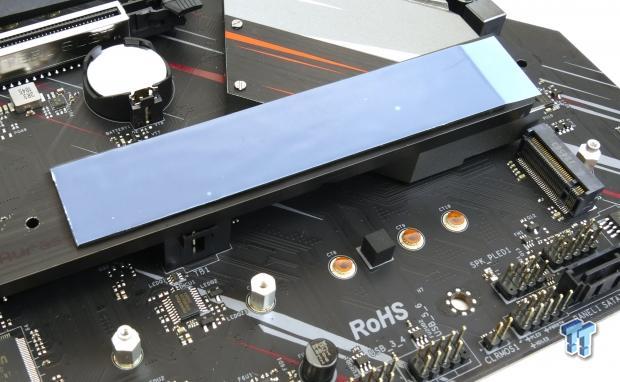
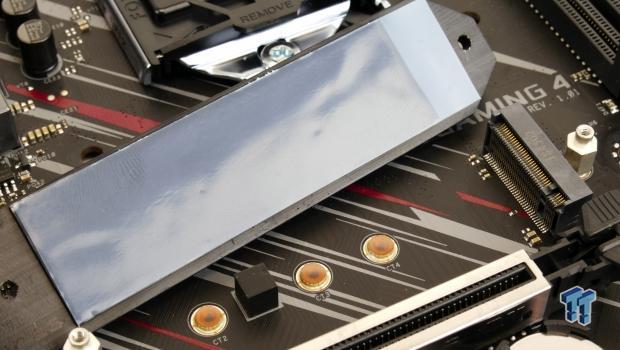
There are two x4 PCI-E 3.0 M.2 slots with heat sinks. The top one also supports SATA based M.2 drives, but if you use a SATA M.2 drive, it will disable SATA port 0.
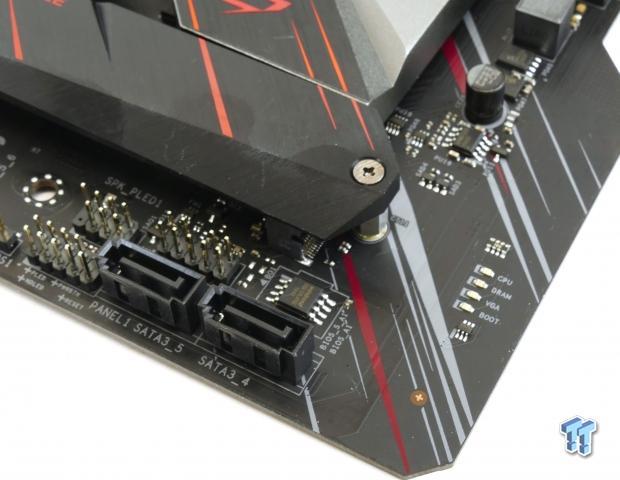
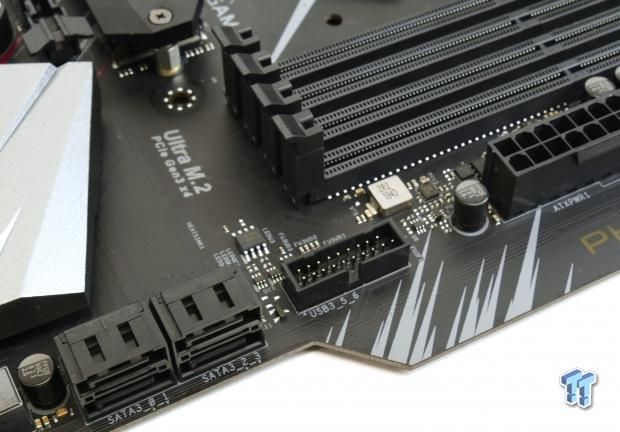
The motherboard also features two SATA6Gbps ports that are angled straight up, and they are located at the bottom right corner of the motherboard where we find boot LEDs and front panel connectors. A USB 3.0 internal header is located mid-board.
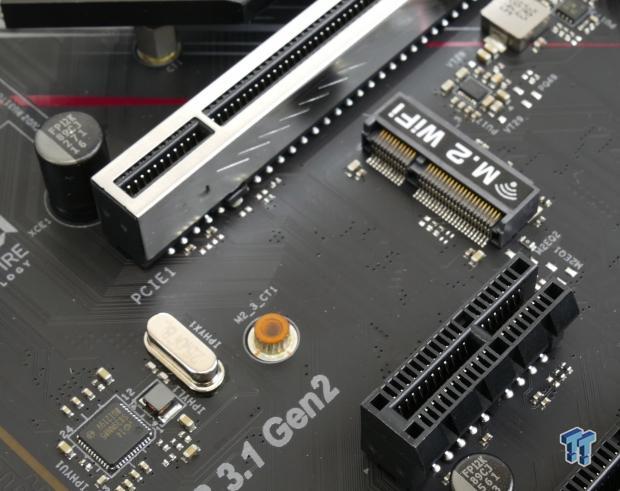
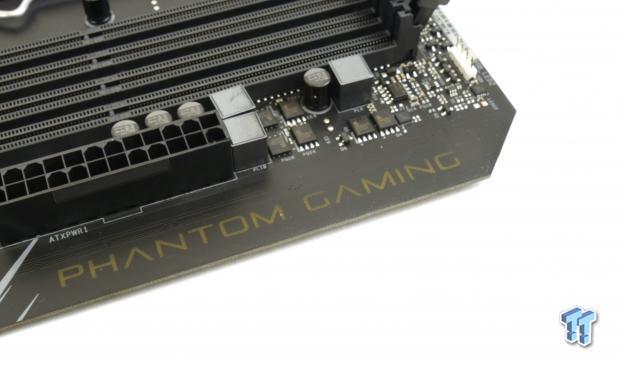
There is also an M.2 WIFI card slot, so you can add in WIFI later one, and there are three holes in the IO panel to facilitate antenna. At the top right of the motherboard, we find an RGB LED header.
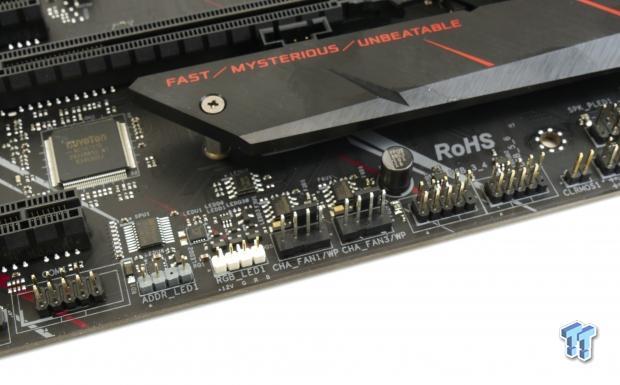

At the bottom of the motherboard, we find another RGB header and an addressable RGB LED header alone with two USB 2.0 internal headers and a COM header. The heat sinks are all screwed to the motherboard.
ASRock B365 Phantom Gaming 4 Circuit Analysis
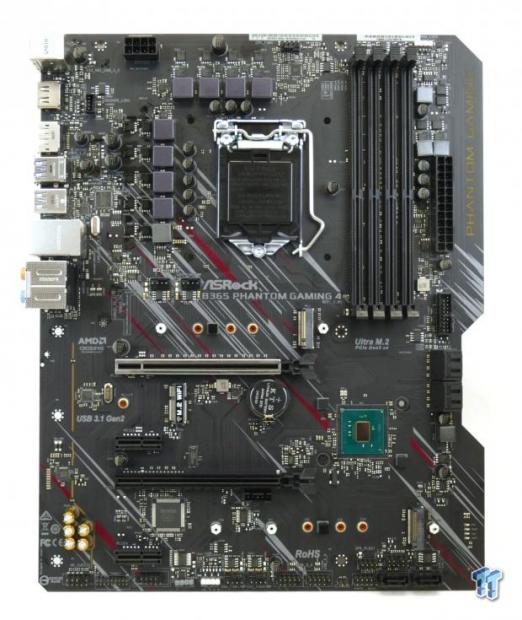
The B365 Phantom Gaming 4 reveals its secrets with the heat sinks removed.
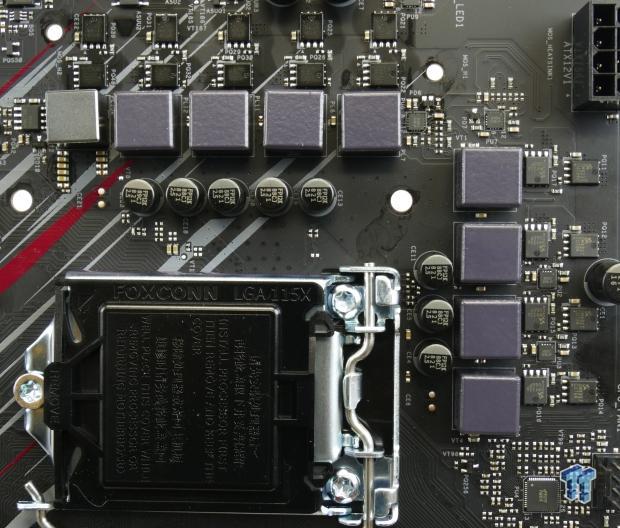
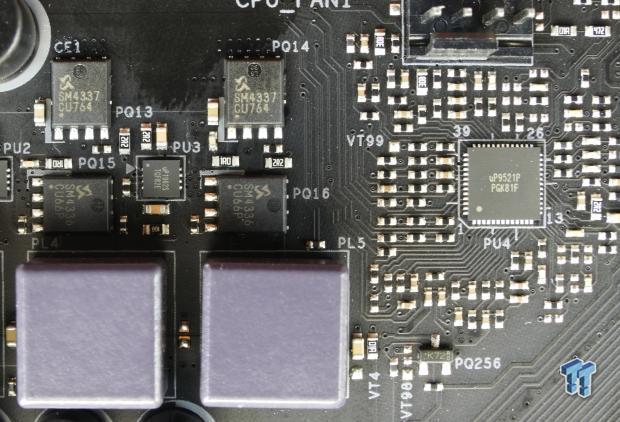
The VRM is in a 6+2 phase configuration, with a single phase VRM for the VCCSA. The six VRM phases for the VCore are doubled using three uP1961 doubler/dual driver chips, and the two iGPU phases use two uP1962 drivers. The UPI Semiconductor uP9521P is a 4+3 phase PWM controller in 3+2 phase mode. The MOSFETs are the Sinopower SM4337 (H) and SM4336 (L).
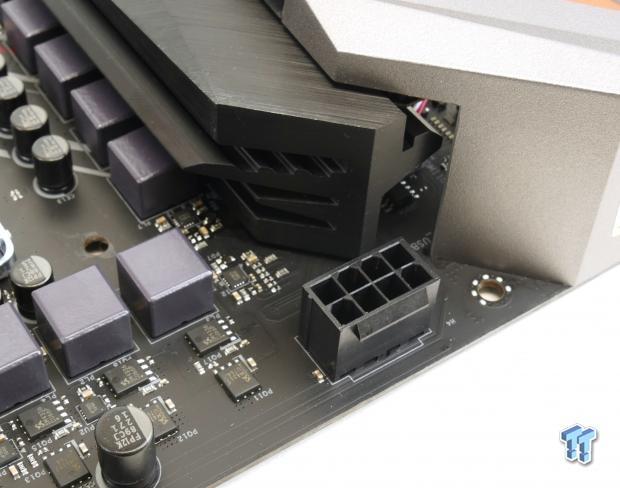
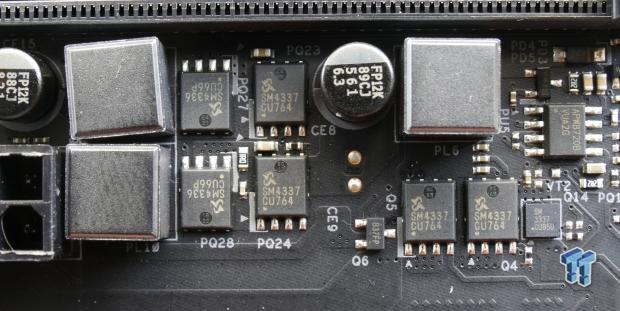
We get a single 8-pin power port, but that's enough for any CPU since the motherboard cannot overclock the CPU. The memory VRM is a two-phase for the main DDR voltage controlled by the Anpec APW8720 single phase PWM with the driver, and the phases are the same makeup as the VRM phases. A single phase is used for the VPP rail.
ASRock B365 Phantom Gaming 4 Circuit Analysis Continued
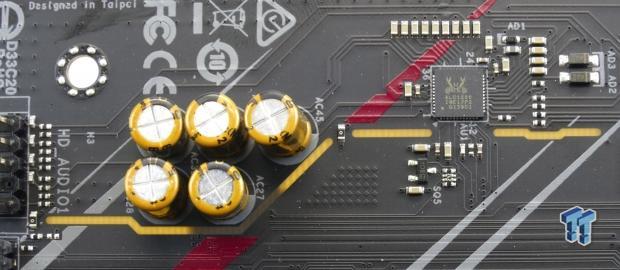
The Realtek ALC1200 is used, which is different than the ALC1220. We will see how it performs later down.
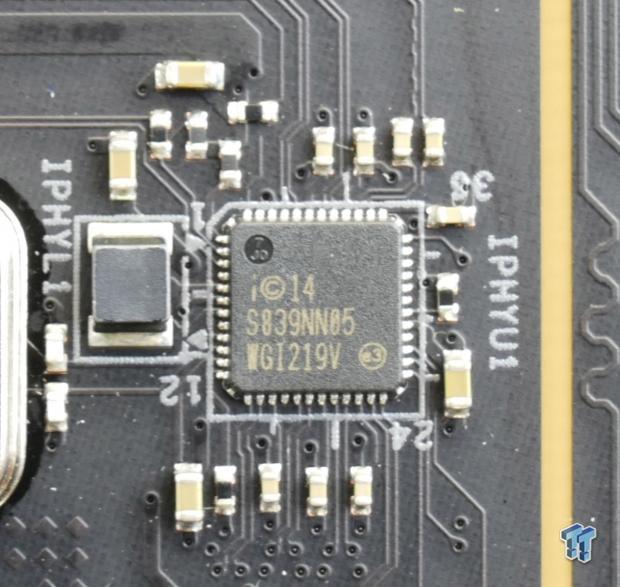
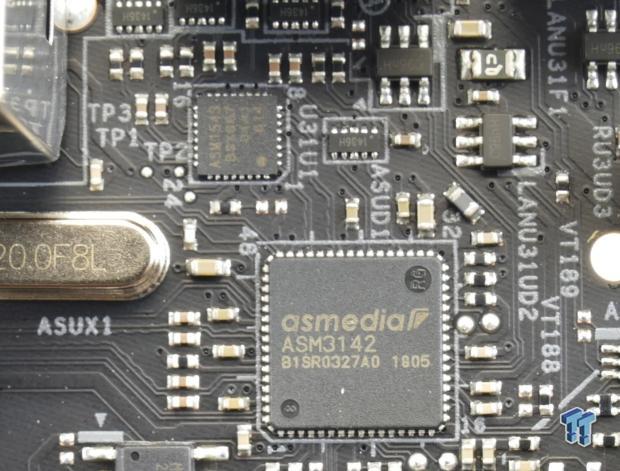
Intel's i219v is the PHY that provides the GBit Intel NIC. An ASMedia ASM3142 USB 3.1 controller is used to give us to two rear USB 3.1 ports, and an ASM1543 is used as the type-C switch chip.
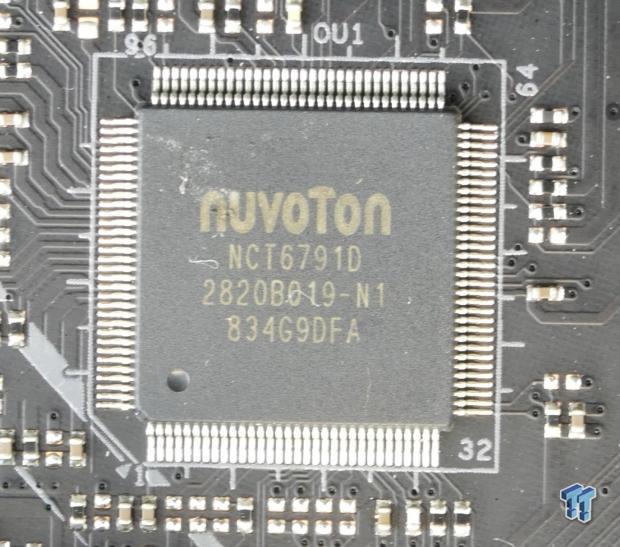
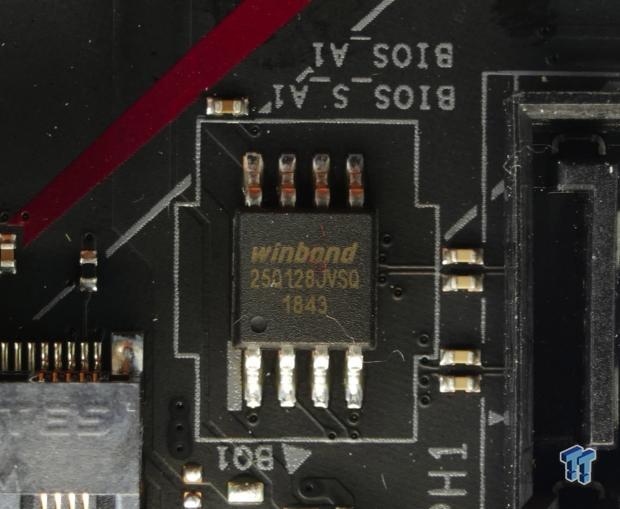
The Nuvoton NCT6791D is used as the SuperIO controller, and the motherboard has a single 128Mbit BIOS ROM.
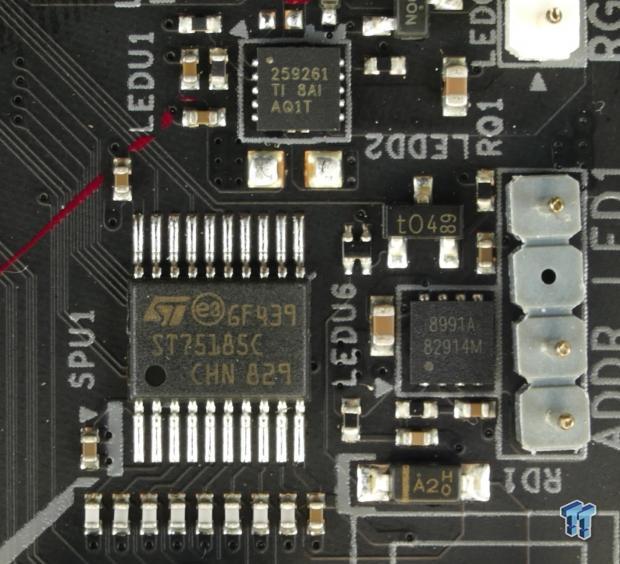
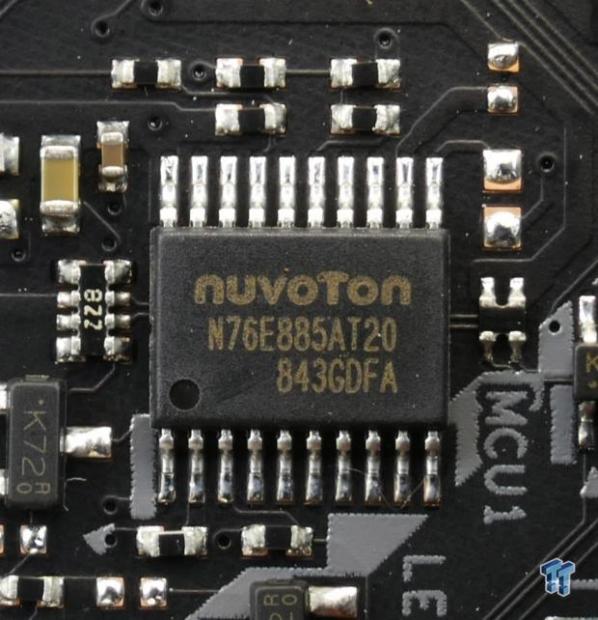
An ST75185C microcontroller is used to provide addressable RGB LED support, and we find all the headers have eFuses. A Nuvoton N76E885AT provides RGB LED support.
BIOS and Software
BIOS

The UEFI BIOS here is pretty decent, pretty much what you would expect from a B365 chipset motherboard. Fan control is present as a GUI and as a manual input menu. What was really good was RGB LED fan control, which was quite advanced for the UEFI. All other pertinent settings were there as well.
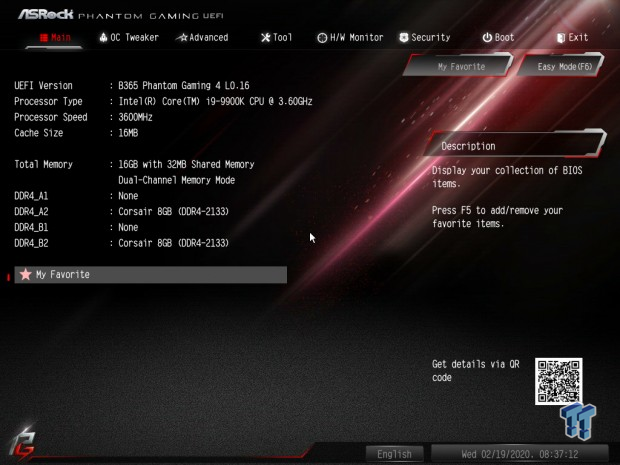
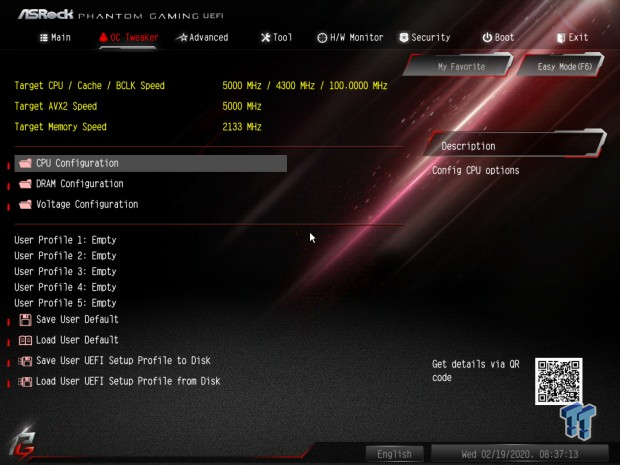
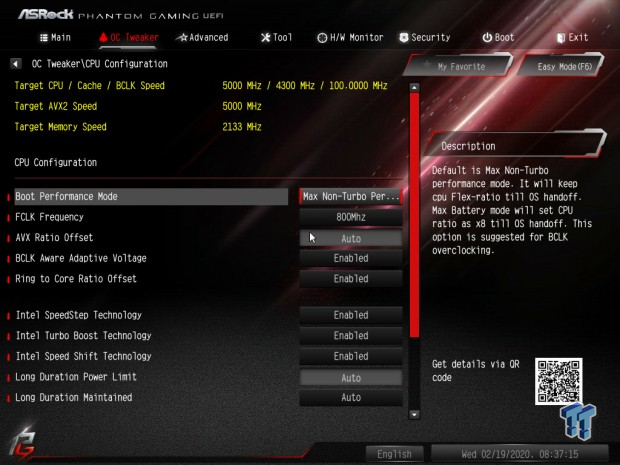
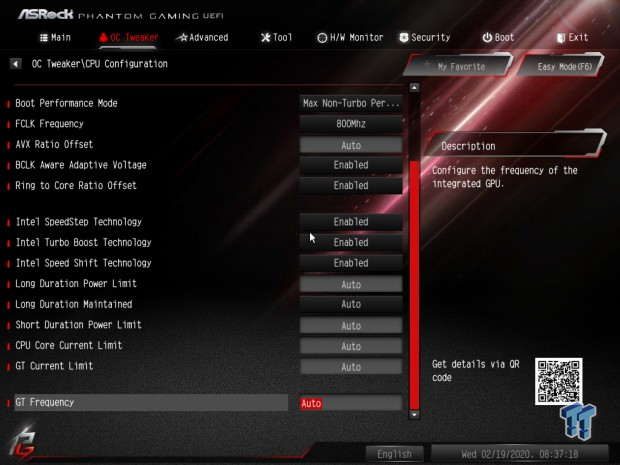
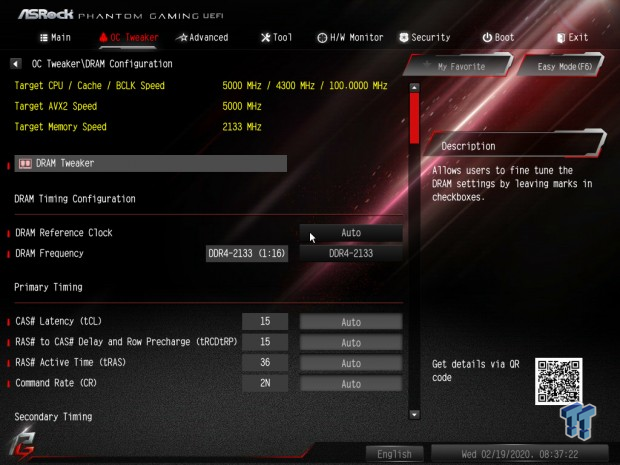
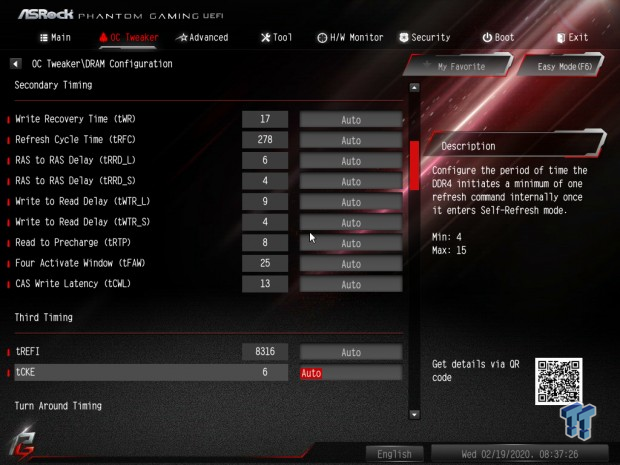
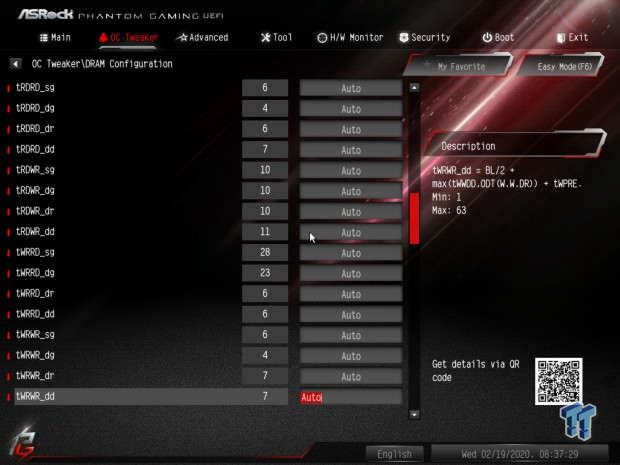
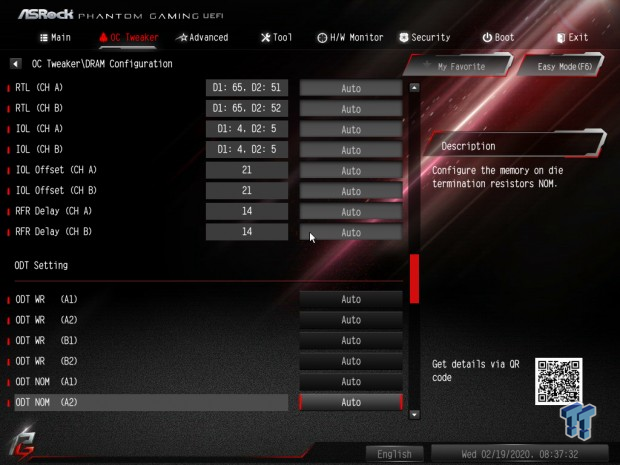
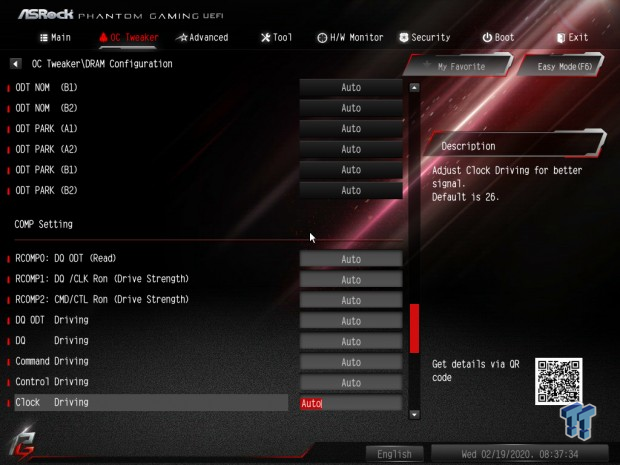
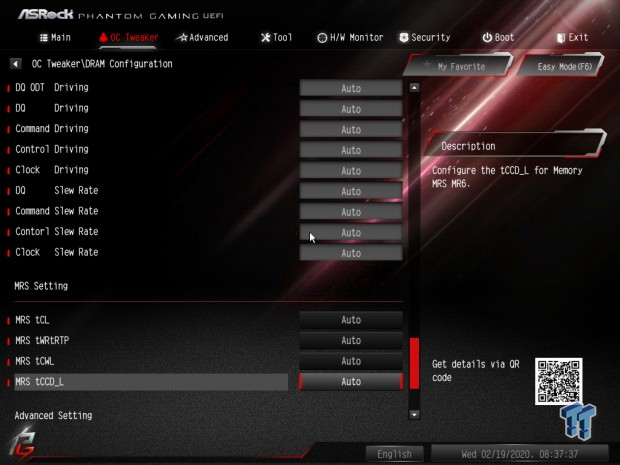
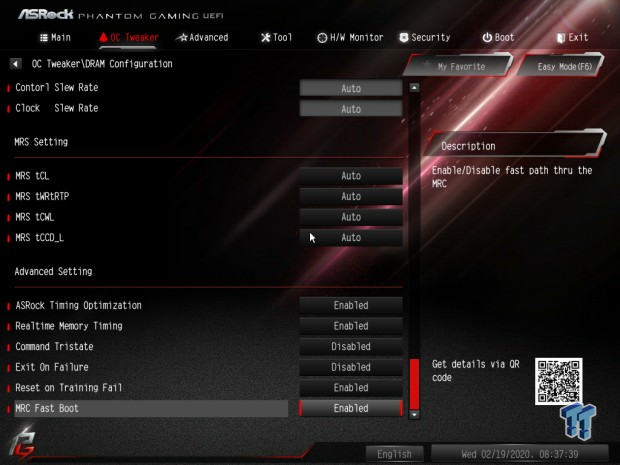
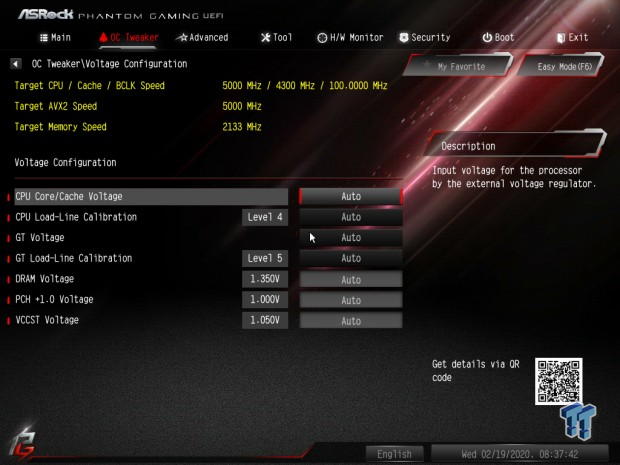
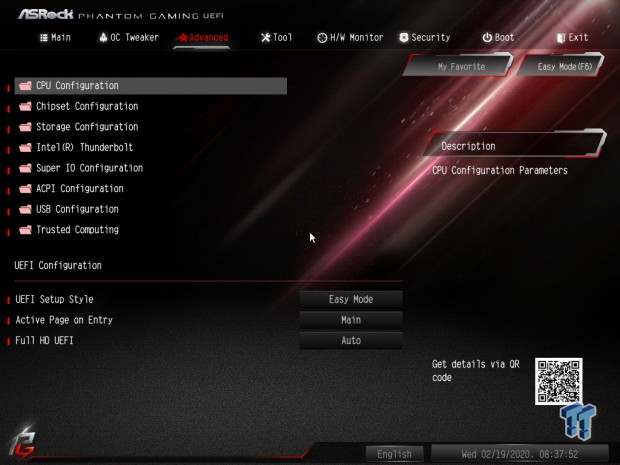
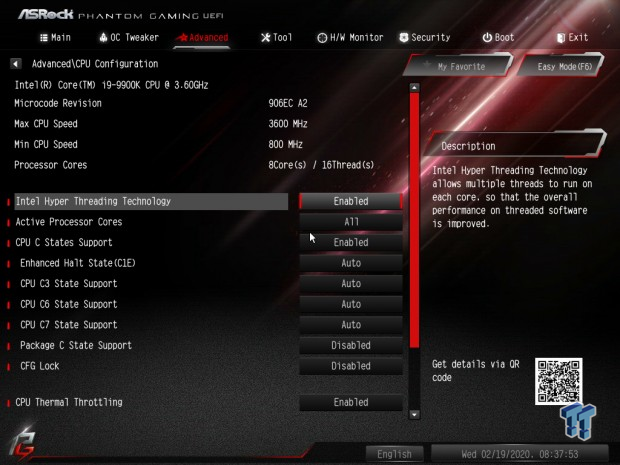
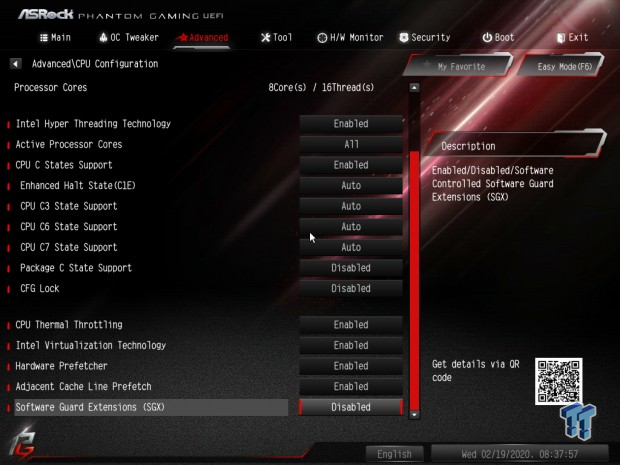
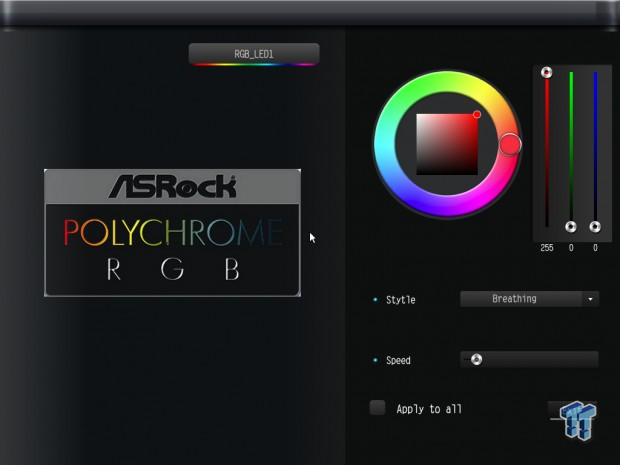
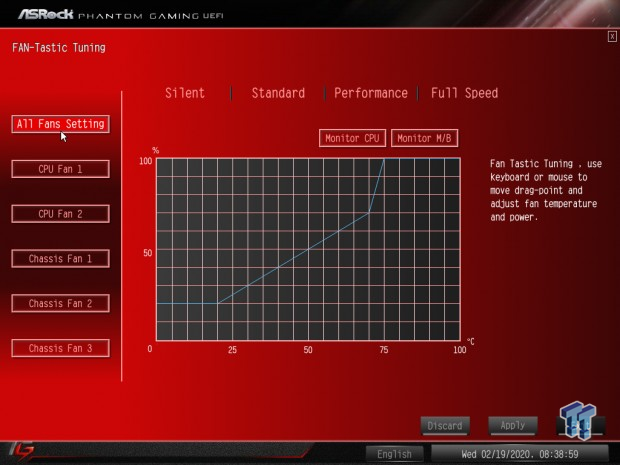
Software
Software includes Phantom Gaming Tuning, Polychrome RGB, Key Master, XFast LAN.
Test System Setup
Steven's Motherboard Test System Specifications
- Motherboard: ASRock B365 Phantom Gaming 4
- CPU: Intel i5-8400
- Cooler: Corsair H110i - Buy from Amazon
- Memory: Corsair Dominator Platinum 16GB (2x8GB) 3200MHz
- Video Card: GTX 1080 Ti - Buy from Amazon / Read our review
- Storage - Boot Drive: Kingston KC1000 480GB
- Storage - USB Drive: Corsair Voyager GS 64GB - Buy from Amazon / Read our review
- Case: Corsair Obsidian 900D - Buy from Amazon / Read our review
- Power Supply: Corsair RM1000i - Buy from Amazon / Read our review
- OS: Microsoft Windows 10 - Buy from Amazon
- Monitor: ASUS PA328 ProArt 32" 4K - Buy from Amazon
- Keyboard: Corsair K70 LUX - Buy from Amazon
- Mouse: Corsair M65 PRO RGB - Buy from Amazon / Read our review
- Headset: Corsair VOID RGB Wireless - Buy from Amazon / Read our review
- Network: ASUS XG-U2008 10Gbit Switch
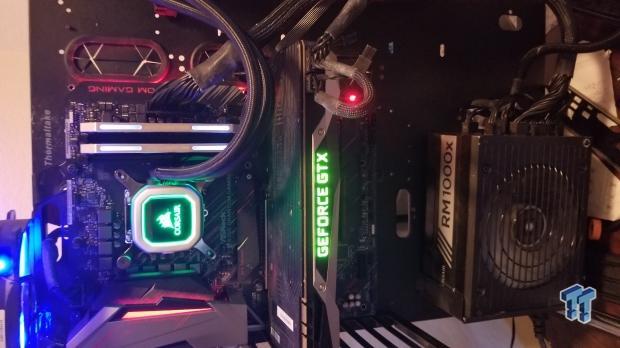
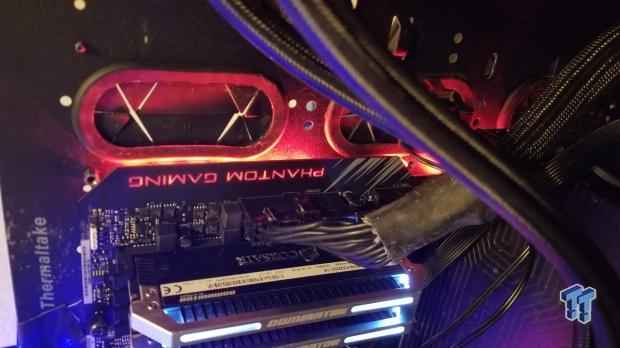
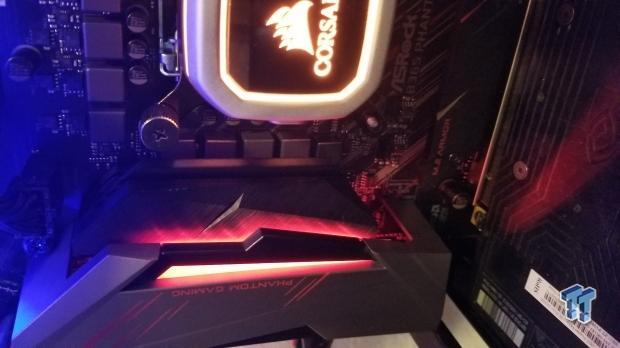
The back of the motherboard lights up pretty bright, as does the IO shield.
CPU, Memory, and System Benchmarks
CINEBENCH R15
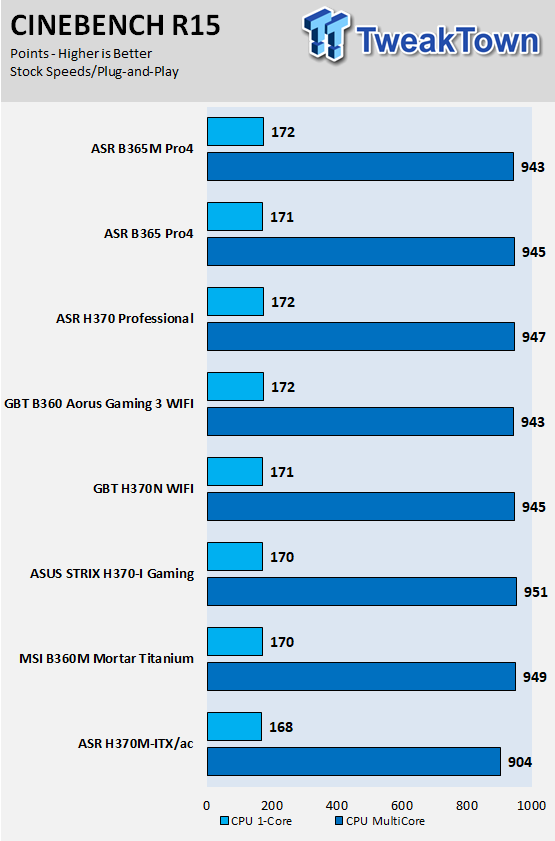
wPrime
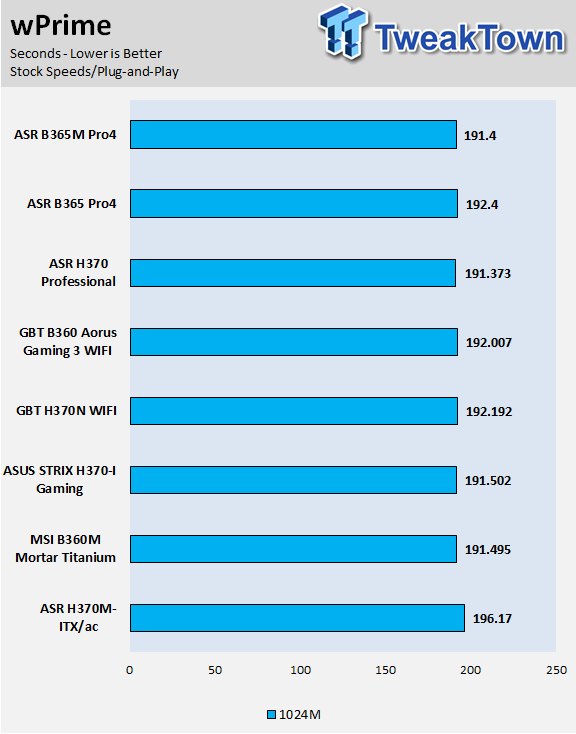
AIDA64 FPU
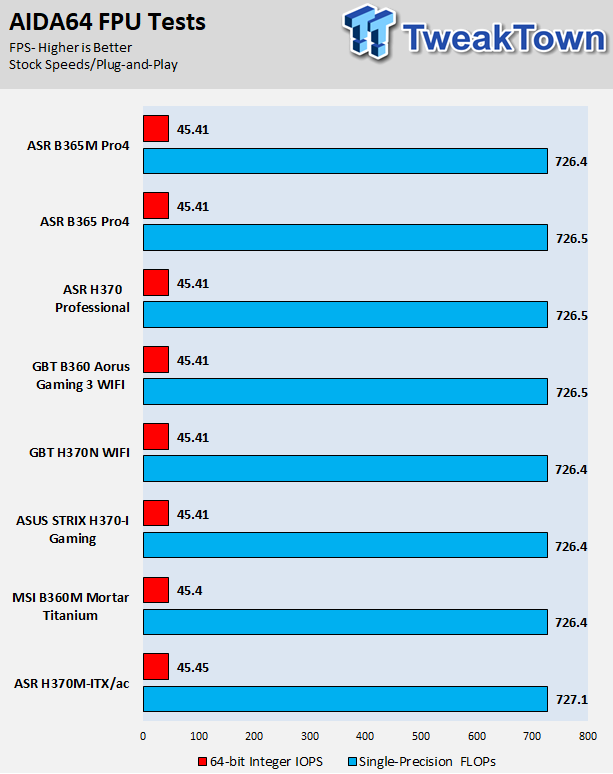
AIDA64 Memory
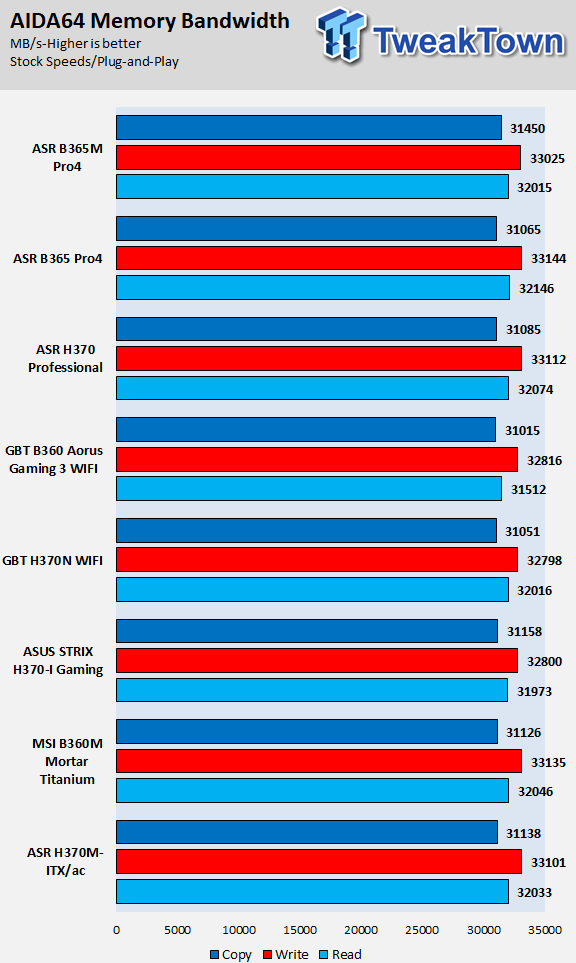
ScienceMark
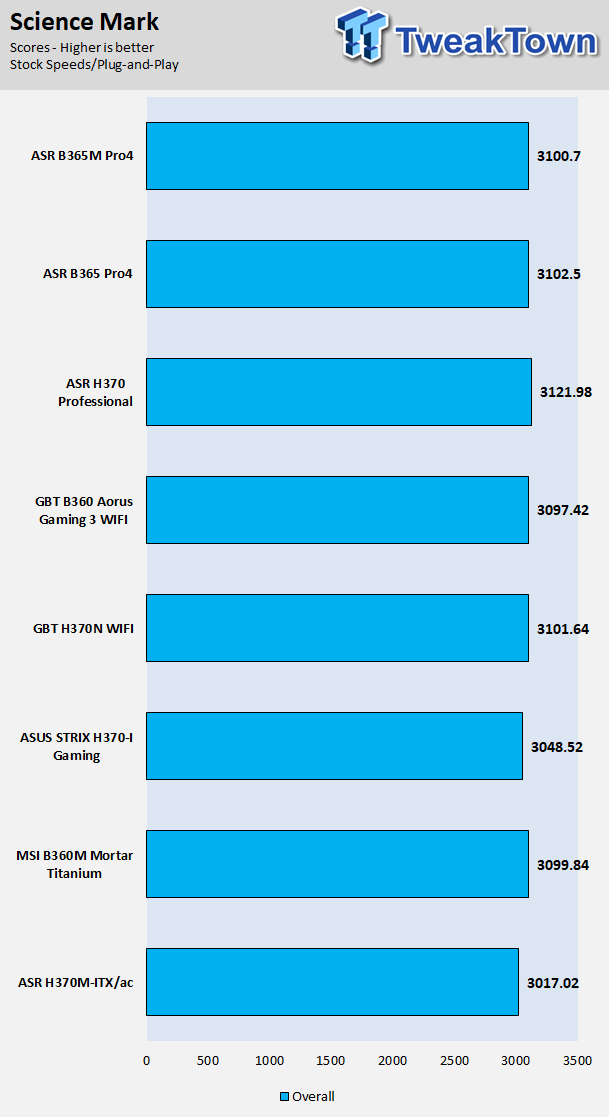
HandBrake
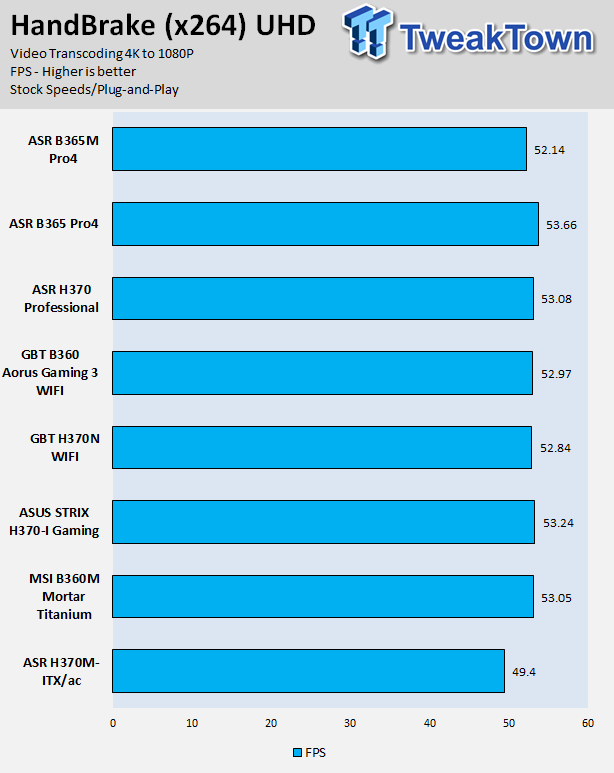
3DMark: Fire Strike
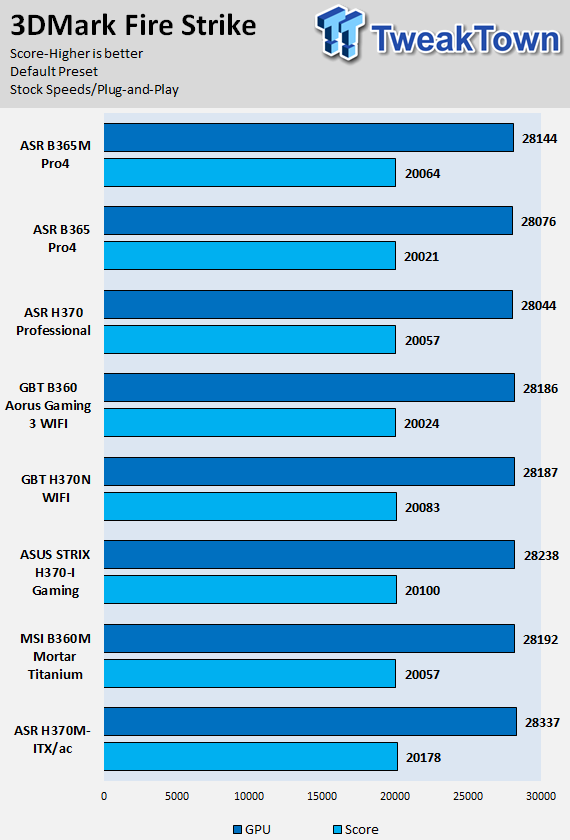
3DMark: Cloud Gate
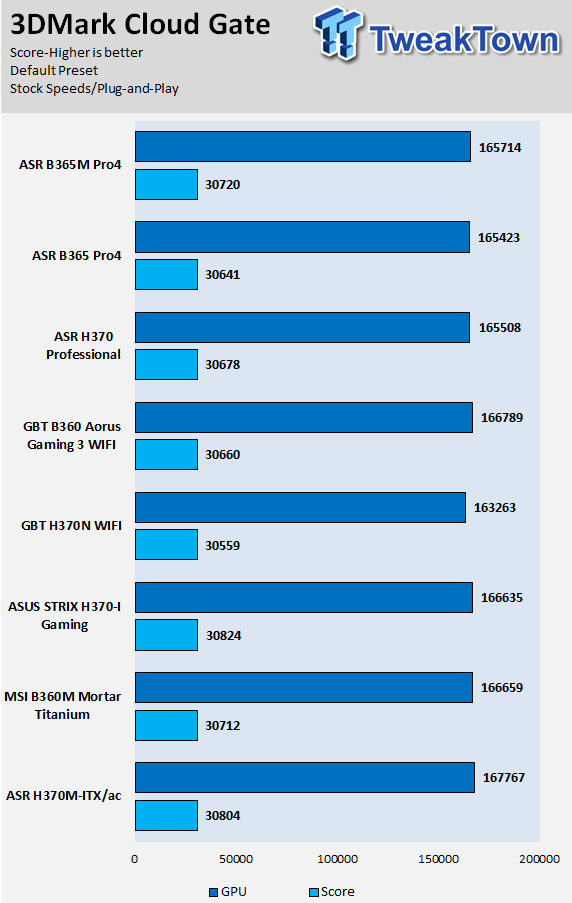
ResidentEvil 6
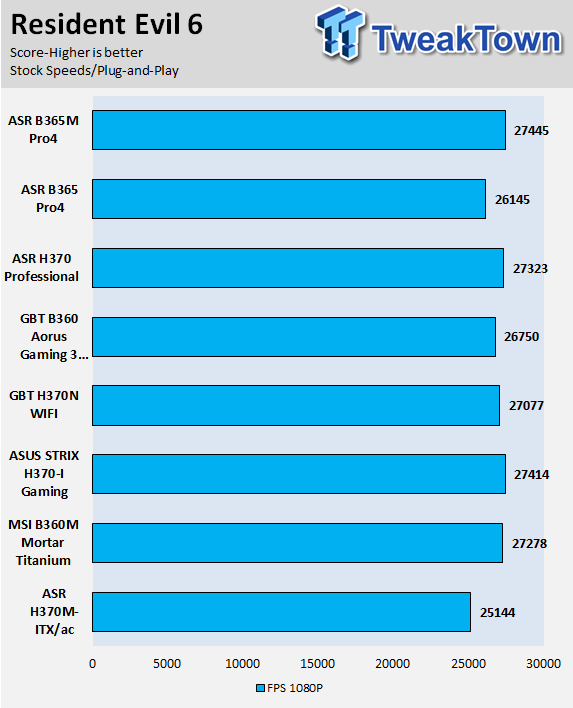
Performance is pretty much identical in all these boards, and since the CPU can't overclock it's not like MCE or any setting would sway performance in one way or another. Overall, no problems with performance.
System IO Benchmarks
CrystalDiskMark SATA6G:
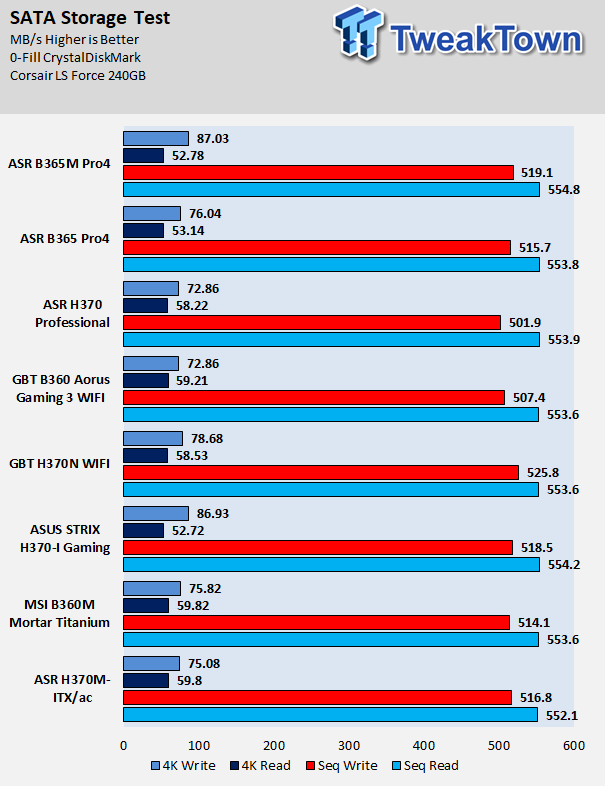
CrystalDiskMark M.2:
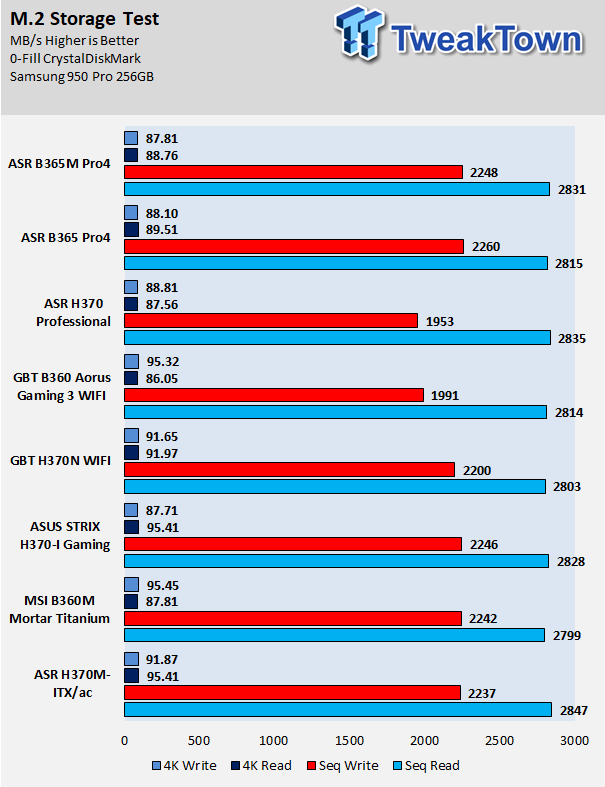
ixChariot Network Throughput:
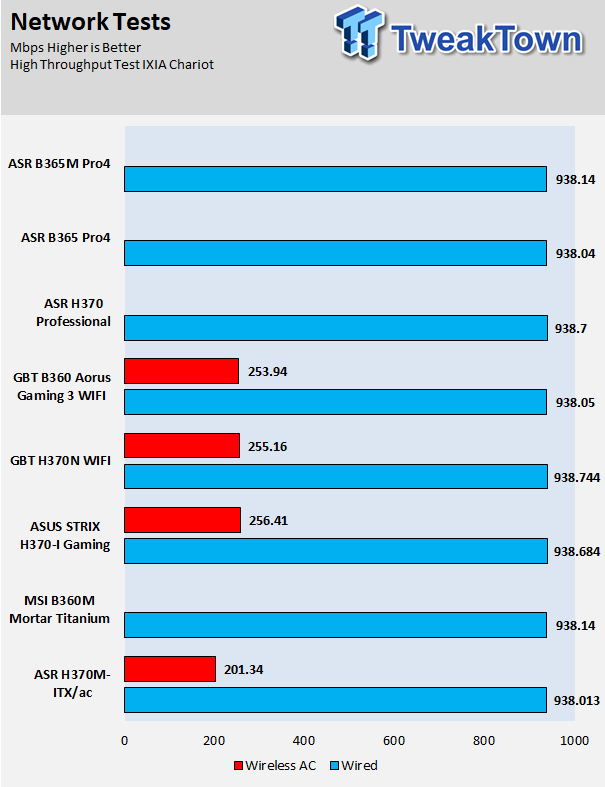
Networking and storage performance are all solid.
Audio RMAA 5.5:
Sound Judgment by Ear: Very good, not too bad for onboard audio. There are five ratings for audio: 1. Problems, 2. Okay, 3. Acceptable, 4. Very good, 5. Excellent
Thermal Imaging and Power Consumption
System power is measured at the wall with an AC power meter.
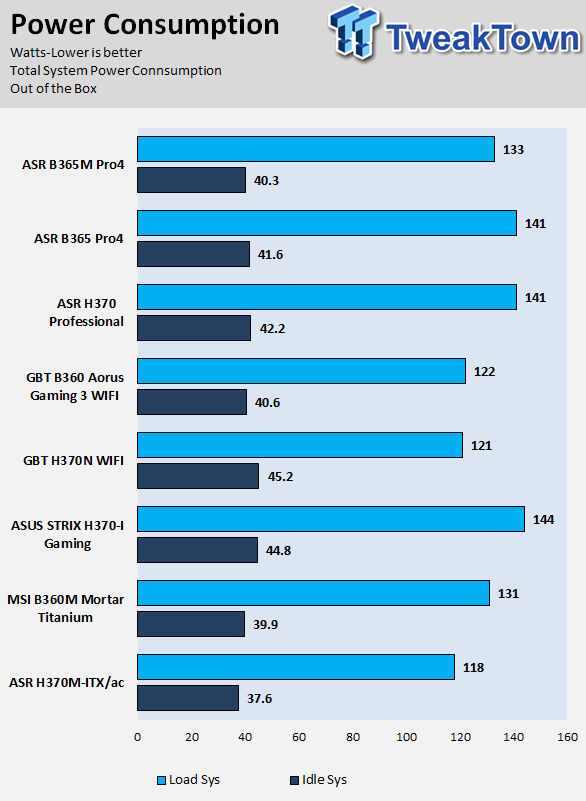
Note on Thermal Images: In the temperature section, we use our Seek thermal imaging camera to capture the surface temperatures of major components on the board. I look at the VRM and then all other things that light up the screen. If there is something to worry about, then I will state it. Otherwise, I will just show the hotter running parts of the board for fun. Unless some component is over 80-90C, then there isn't anything to worry about.
All systems will act differently, so I will look for commonalities, such as how far from the VRM the heat spreads through the PCB and the difference in temperature between the front side and back side of the PCB. Keep in mind, the majority of the heat from the VRM goes into the PCB as it is a giant soldered on copper heat sink. A lower temperature on the front of the PCB points towards a more effective heat sink.
Thermal Testing at Stock Speeds:
The image on the left is always at idle, and the image on the right is at load. During ALL TESTS, fans above the VRM that cool the CPU cooler's (Corsair H110i) radiator are turned on to high (12v).
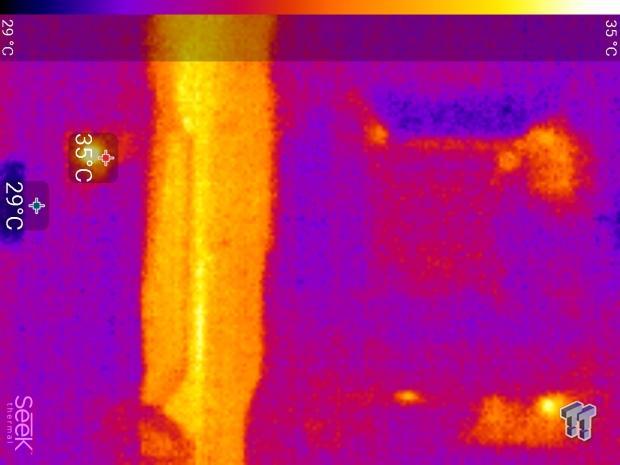
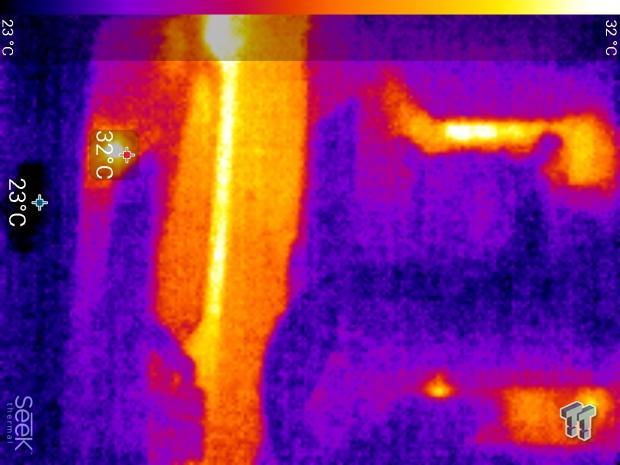
Full frontal.
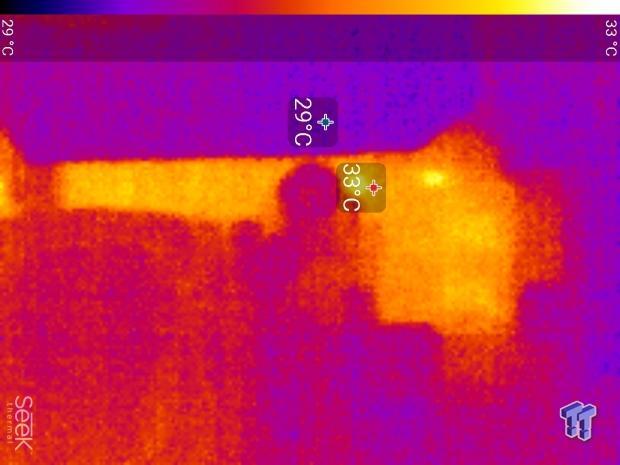
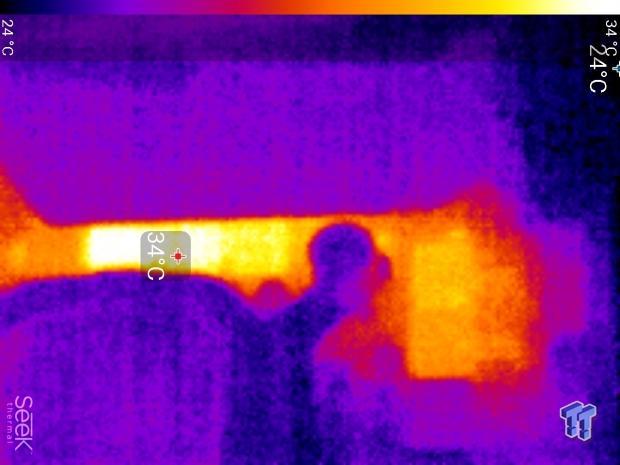
Up-close of the front of the VRM.
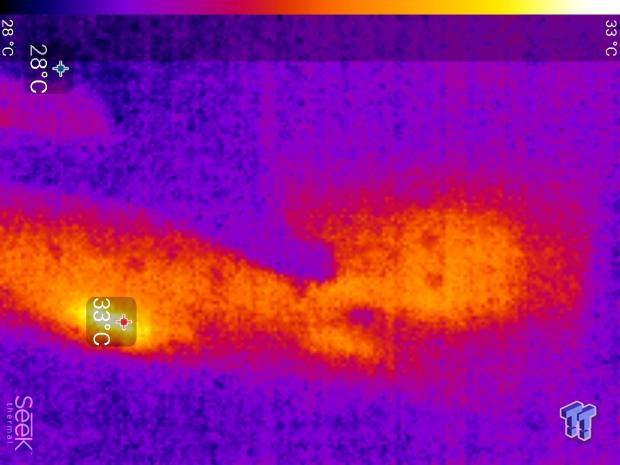
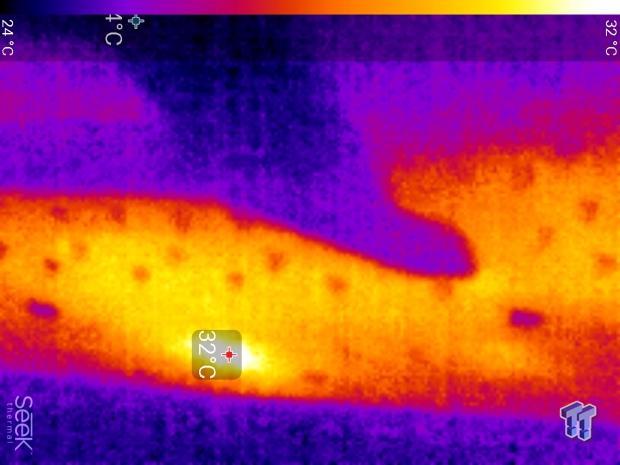
Up-close of the back of the VRM.
Thermal performance is pretty good, we see the heat spread more than go up, but we can see a hot spot, but the good news is that it's under the heat sink and not part of the 33% of the CPU VCore VRM not under the heat sink. Anything under 60C is great, 60-80C is acceptable, and anything above 80C is a bit worrisome (if at stock).
What's Hot, What's Not & Final Thoughts
What's Hot
High-end 3rd Party Chips: At the $100 mark we don't expect to find an Intel NIC, added ASMedia USB 3.0, or an ALC1200 NIC, but all of those are present on this motherboard.
Aesthetics: With built in RGB LEDs and even an IO cover, the motherboard looks high-end. Add to that three RGB LED headers, with one of those being addressable, and this motherboard starts to look better and better.
M.2 heat sinks: The motherboard has two M.2 slots, both of which have decent heat sinks.
What's Not
33%: A third of the VCore VRMs are not covered and cooled by heat sinks.
Final Thoughts
The B360 Phantom Gaming 4 is pretty loaded for a motherboard around the $100 mark. Intel NICs cost a pretty penny, and the ASMedia ASM3142 USB 3.1 (10Gbps) controller isn't cheap either, neither is the ALC1200.
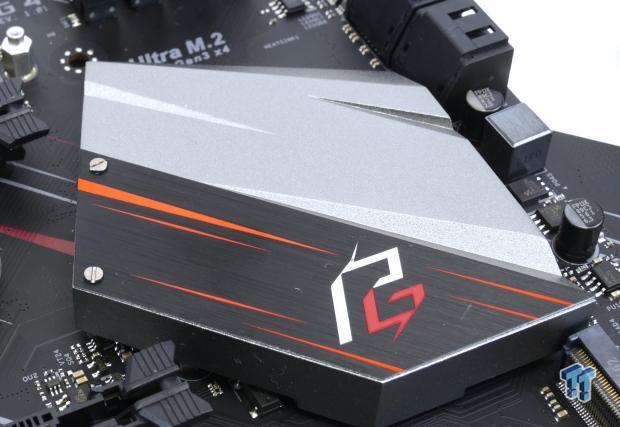
We didn't expect to find three RGB LED headers, nor did we expect to find an addressable RGB LED header. We were quite pleased with this motherboard, and even though it uses the less costly B365 chipset, which is based on the previous generation, you really can't tell the difference between this motherboard and one that uses the B360 chipset. Overall, we would recommend this motherboard for your 8th or 9th generation CPU.
